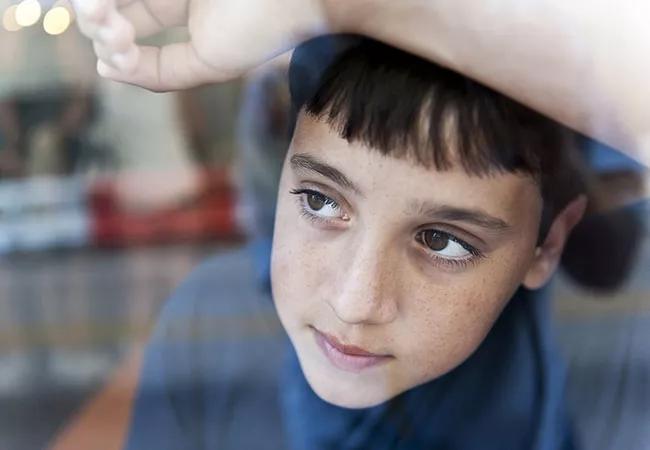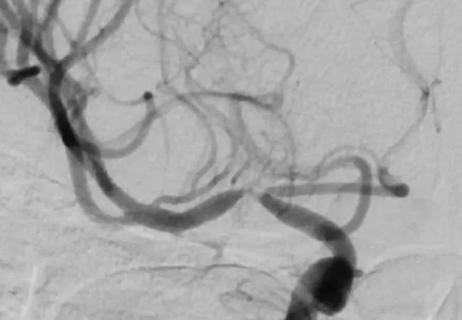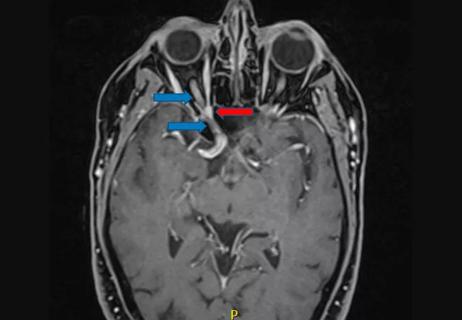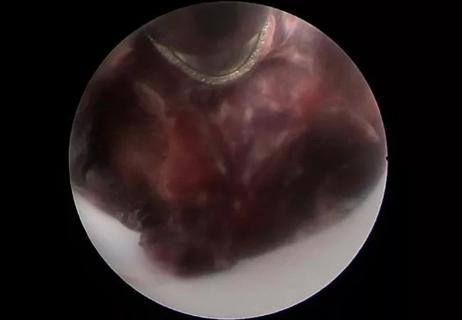Tips for intervening before epilepsy leads to depression or suicide

By Elia Pestana Knight, MD, and Tatiana Falcone, MD
Cleveland Clinic is a non-profit academic medical center. Advertising on our site helps support our mission. We do not endorse non-Cleveland Clinic products or services. Policy
“Henry,” 13 years old, has had generalized tonic-clonic seizures since he was 11 months old. His seizures occur five or six times a week, day or night, and consist of whole body convulsions, without warning, lasting two to three minutes, often with violent falls, tongue biting and urinary incontinence.
His EEG showed generalized spikes and seizures, and his MRI was normal. The family has a history of epilepsy, so it has been strongly suspected that Henry’s seizure disorder has a genetic etiology . Genetic testing confirmed a pathogenic SCN1A gene mutation.
He has tried 10 antiepileptic medications. At this time, treatment includes three antiepileptic drugs (rufinamide, phenobarbital and clorazepate) and four psychiatric medications (fluoxetine, mirtazapine, hydroxyzine and lamotrigine).
In addition to drug-resistant epilepsy, Henry has significant psychiatric conditions including attention deficit hyperactivity disorder, depression and psychogenic stress-induced nonepileptic seizures that are clearly distinguishable from his epileptic convulsions.
Henry has been a good student, but he has become socially isolated and a victim of verbal and physical bullying in school and around his neighborhood. The bullying started after he began wearing a helmet to school and for playing outdoors to protect himself from the effects of seizure-induced falls.
As is the case for Henry, children with epilepsy are at risk for depression, anxiety, social isolation, bullying and suicide.
Depression usually manifests differently in children than in adults: Instead of appearing sad, children may be irritable or sullen. Red flags include not wanting to go to school, spending more time alone, or changes in eating or sleeping habits. Parents of affected children often report, “My child is just not him/herself.”
Children who are bullied may avoid school and develop poor academic performance, substance abuse and suicidal thinking. They may go from having good grades to failure.
Effects of bullying can be lifelong and become harder to treat later, as poor coping mechanisms become established. Adults with epilepsy whom we see in clinic are much more likely to have depression, anxiety and psychogenic seizures compared with the general population.
In Henry’s case, the psychogenic seizures may have developed as a mechanism to stop the bullying, which may help explain why so many drugs seemed to be ineffective.
The incidence of suicide is much higher in patients with epilepsy than in the general population, as reported in a meta-analysis by Pompili et al. Medical and psychiatric comorbidities, difficult psychosocial circumstances and the availability of drugs to carry out suicide all contribute to the problem. Medication overdose is the most frequent method of suicide in people with epilepsy.
Often children do not tell anyone they feel depressed, are being bullied or are considering suicide. A common misperception is that asking children about suicide will trigger it.
To overcome this challenge, Cleveland Clinic’s Neurological Institute employs its homegrown Knowledge Program© data collection system. Before each routine appointment, epilepsy patients use the Knowledge Program to take a five- to 10-minute self-assessment in the waiting room. The assessment screens for several comorbidities, including anxiety, depression and suicidal ideation, and has been invaluable for rapidly assessing mental health needs. As reported in a recent post on this site, routine use of this tool among 400 children with epilepsy found that 1 in 4 screened positive for suicidal ideation, a finding that enabled aggressive suicide prevention interventions in a number of cases.
Other quick assessment tools include the 20-item Center for Epidemiologic Studies Depression Scale for Children and the four-question, two-minute Ask Suicide-Screening Questions (ASQ) tool. Mental health screening should be performed at least every six months or with treatment changes.
It’s important for physicians to recognize when a child with epilepsy is being bullied, and be proactive about preventing or resolving it. Focusing strategies around the following questions can be helpful:
Educating classmates about epilepsy can be a critical intervention. A good resource is Stand Up, a three-session computer-based bullying prevention program designed to help high school students develop skills for relating to others with understanding and respect. A recent pilot study reports on the program’s potential.
The family moved to a new neighborhood and sent Henry to a different school in the hope that a fresh start would help.
When the problems resumed at the new school, the family approached the principal. He was unaware of the bullying until he saw evidence of physical bullying on the school’s surveillance camera. The instigator was expelled from school. A “safe adult” at school was assigned to Henry, and he is now doing much better.
Regular mental health screening and open conversations are cornerstones of prevention. Physicians should make it part of routine care to ask parents of children with epilepsy if they have had problems with behavior or have mental health concerns.
It’s also important for physicians to model for parents how to ask their children about their mental state and whether bullying is occurring so that parents feel empowered to keep the conversation going at home. Families and health professionals should work with a patient’s school to educate adults and students about epilepsy and take steps to ensure the child is physically and emotionally safe.
Dr. Pestana-Knight is a pediatric epileptologist in Cleveland Clinic’s Epilepsy Center.
Dr. Falcone is an adolescent and pediatric psychiatrist with an appointment in the Epilepsy Center.
To view a webcast of this and nine other epilepsy cases in Cleveland Clinic’s “Hot Topics in Epilepsy for Children and Adults” CME-certified webcast series, visit ccfcme.org/EpilepsyCME. This activity has been approved for AMA PRA Category 1 Credit™.

When specialized surgery makes sense for moyamoya syndrome

Multilevel cervical fusion restores function in an athletic 78-year-old

Case study underscores the imperative for thorough evaluation with SEEG

Schwannoma of the lacrimal nerve threatened right eye blindness

Case report demonstrates utility in a brain-injured patient

Partial resection plus radiation leads to good outcome from an unpredictable tumor

Diagnosis and treatment of rotational vertebrobasilar insufficiency syndrome

First reported case expands use of minimally invasive techniques